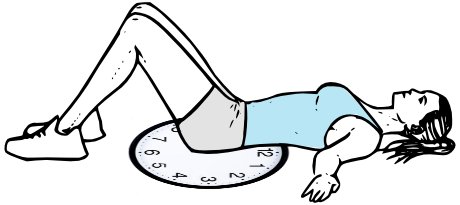Who Is Jill?
When Jill first presented to the Wellness Station, she described her life as “a mess” and felt skeptical that another attempt at physical therapy would make any kind of difference. Jill is 75 years old and had stayed generally active with outdoor rowing and exercising with weights. However, Jill has experienced recurrent bouts of debilitating back pain over the last 15 years, which tended to set her back for quite some time. She had been to physical therapy several times, which never made any long-lasting difference for her.
Jill was having an extremely challenging year. She had become more sedentary during the pandemic, as she did not feel as comfortable working out with her personal trainer. She lost her husband, her lifelong best friend. On top of this, her sister also lost her husband around the same time.
While at her sister’s house to support her both emotionally and physically and to re-organize their house, Jill suffered a severe back injury. A herniated disc in her lumbar spine became sequestered, and the sequestered disc fragment led to nerve compression. Jill began to experience severe back and leg pain, which was constant and severe. She had herniated several discs in the past, and she described this pain as far worse.
Jill went through a course of traditional physical therapy and described it as follows:
““It was very modest stuff. I felt like there wasn’t much of a progression, and it wasn’t as individualized as I would have hoped. They might have used the same printable exercises as any other old lady with back pain!” ”
Jill Finds The Wellness Station
Jill was referred to the Wellness Station four months after her sequestration injury, and was still experiencing constant, debilitating pain. In coming to the Wellness Station, Jill hoped for improvement but wasn’t sure what to expect. Her goals were to improve her fitness and build her core strength in order to be active, independent, and play with her grandchildren- however, she was beginning to lose hope that any of this would be possible.
““In the first session, I found Jacob Tyson to be an exceptional listener as I outlined my back pain history, the recent event and goals. The room was calm as was his demeanor that set a relaxed tone.””
““I still was puzzled in the first few sessions that focused on just a few movements or exercises to establish what is called the pelvic clock. But at each weekly session, the new movements built on the previous week, a method I could appreciate as a former newswriting instructor, teaching the basic journalism language and incorporating more concepts and practices as students learned newswriting style.” ”
Jill Turns the Corner, & Beyond!
As we worked together over the course of weeks to months to a year, we gradually progressed Jill’s home exercise program by introducing new movements, slightly more challenging than the week before. We continued to layer on educational and lifestyle components that were related to Jill’s life, including concepts of biomechanics, anatomy, exercise physiology, psychology, mindfulness, pain neuroscience, and more. As Jill continued to learn and build her strength and confidence, she has been able to do more demanding physical tasks without any increase of pain.
“ “Through the sessions, I learned how to stand up and walk in new ways, to use my legs and tailbone to shift weight, to improve the flexibility of my entire spine—all aimed at relieving the pressure and weight on the lumbar part of my spine. We also did relaxation and simple meditation to promote mind-body connection. After each session, I received an email, summarizing our activity. I have compiled all those exercises and support into a file that I can use to refresh my memory of exercises—and to see my progress.” ”
““The knowledge and movements I learned gave me a feeling of accomplishment and control over the mechanics of my body. Usually an exercise or stretch would relieve the pain, and I did not take any medication. A triumph!” ”
Jill is doing much better today, and feels that she has gotten her life back. She no longer feels limited by her pain, and feels empowered to stay active and engaged in life. She is now back to rowing (weather-permitting!), going to the gym twice per week, and having no trouble lifting her quickly growing grandchildren!
Jill also improved on the Modified Oswestry Disability Index (a survey used to measure the impact that back pain has on quality of life) from a 58% to a 12% over a period of six months, which is over four times the threshold of clinically significant improvement.
Stay tuned in to see our next blog post, which will break down more specifically what we addressed with Jill biologically, psychologically, and socially.
Written by Jacob Tyson, DPT - Physical Therapist, Yoga Instructor and The Wellness Station Team






